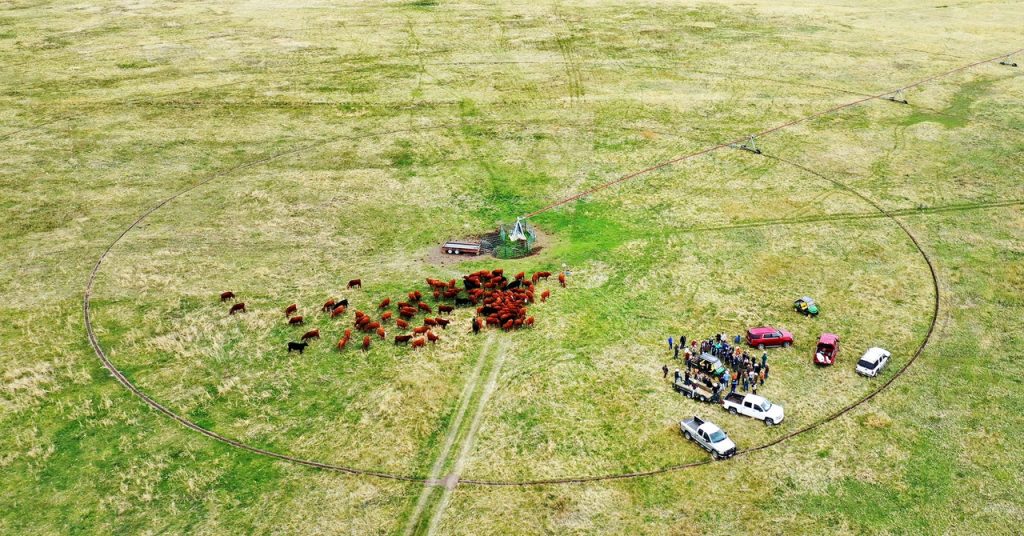Regenerative Farming: A Soil-ution to Climate Change
The Secret to a Thriving Ecosystem
In the rolling hills of Wales, farmer Patrick Holden has discovered the key to creating a vibrant, biodiverse landscape: working in harmony with nature. By embracing regenerative farming practices such as cover crops, minimal tilling, managed grazing, and diverse crop rotations, Holden has transformed his land into a haven for bumblebees, butterflies, small mammals, and birds.
“Can you see that bumblebee working the clover? The bird life, insects, butterflies, small mammals, and bats … the biodiversity of this place is unbelievable.”
Farming Carbon: The Soil Solution
Regenerative farming not only supports biodiversity but also offers a powerful tool in the fight against climate change. Healthy soil acts as a carbon sink, absorbing CO2 from the atmosphere and storing it underground. According to the UN’s Food and Agriculture Organization, many cultivated soils have lost 50 to 70 percent of their original carbon due to damaging, industrialized agriculture practices.
Soil microbiologist Elaine Ingham, founder of Soil Food Web, emphasizes the impact of tilling on soil health: “Every time you till, you lose 50 percent of soil organic matter,” referring to the compounds that lock carbon into the earth.
The Potential Impact of Regenerative Agriculture
While estimates vary, experts agree that regenerative agriculture could have a significant impact on mitigating climate change. The Rodale Institute, a regenerative agriculture nonprofit, suggests that if adopted globally, these practices could sequester 100 percent of annual carbon emissions.
John Crawford, a professor at the University of Glasgow and lead of the Global Soil Health Program, believes that better soil management strategies could mitigate about half of the hard-to-abate emissions from industries like heavy industry and aviation.
Incentivizing Farmers to Become Carbon Stewards
To encourage widespread adoption of regenerative farming, Patrick Holden proposes paying farmers to be carbon stewards. By redirecting subsidies and implementing annual sustainability audits that reward farmers for generating “public goods” like improvements in food quality, biodiversity, and carbon stores, the transition to regenerative practices could become more appealing and feasible for farmers operating on tight margins.
Measuring Soil Carbon and Addressing Yield Concerns
Accurately measuring soil carbon content is crucial for implementing carbon credit systems. Various technologies exist, ranging in accuracy and expense. Organizations like Carbon Underground work to mitigate climate change by restoring soil health and rekindling its ability to absorb carbon.
While some farmers may experience a temporary drop in yields during the transition to regenerative practices, research suggests that yields rarely drop by more than 5 percent and often rebound quickly. The reduction in input costs, such as less fertilizer and fewer expensive machinery, can offset potential financial losses.
Empowering Small Farmers and Transforming the Value Chain
Scaling regenerative agriculture requires empowering small farmers, who grow 70 percent of the world’s food. However, John Crawford believes that a “whole value-chain transformation” is necessary, involving big farmers, small farmers, and everyone in the supply chain. A combination of financial incentives and legislation may be needed to drive this change.
Buying Time for the Planet
Carbon farming, while not a permanent solution, buys us valuable time in the race to reach net zero emissions by 2050. As Crawford points out, soil has a finite capacity to absorb carbon, but it remains our best option for the next two decades while other solutions are developed and scaled.
“All I’m looking for is to buy about 20 years. We can do that with soil.”
By embracing regenerative farming practices, we can not only support thriving ecosystems and produce nutritious food but also harness the power of soil to combat climate change. It’s a soil-ution that requires collaboration, innovation, and a commitment to working in harmony with nature.

4 Comments
Carbon farming might just be our golden ticket, or are we setting ourselves up for disappointment?
Can we really trust plants to solve our carbon mess, or is this just greenwashing at its finest?
Carbon farming? More like putting our carbon emissions on a diet, and hoping it sticks!
Is carbon farming the future or just a trendy bandaid for a deep environmental wound?